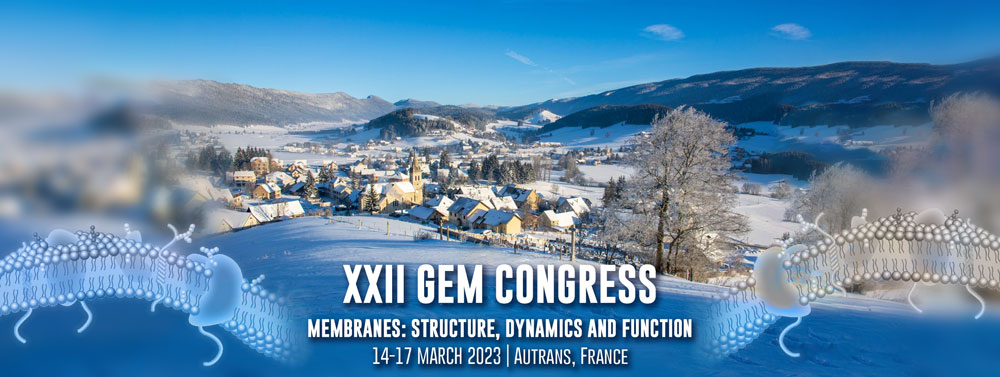Speaker
Description
Poxviruses are enveloped, large cytoplasmic dsDNA viruses that have epidemic potential. Since its successful use as a live vaccine to eradicate Variola virus, the etiologic agent of smallpox, Vaccinia virus (VACV) has become a model for poxvirus research. Early stages of poxvirus assembly rely on a unique membrane acquisition mechanism that does not involve wrapping or budding at cellular compartments. Instead, cellular membranes are recruited and ruptured open to form membrane precursors with stabilized open ends within the host cytoplasm. The VACV protein A6 has recently been identified as a key regulator of this process, belonging to a set of 5 essential viral membrane assembly proteins (VMAPs). Within infected cells, A6 partially localizes to membranes. The crystal structure of the isolated C-terminal domain (CTD) from the Fowlpox virus A6 orthologue revealed a large internal lipid-binding pocket. This binding pocket is essential for successful VACV infection in cell culture. However, the role of A6 in the process of VACV assembly remains poorly understood. In particular, it is unclear whether this lipid-binding pocket mediates membrane attachment. Here, I will present recent findings on the structure of the VACV A6 full-length protein by cryo electron microscopy single-particle analysis. Furthermore, using surface plasmon resonance (SPR) and nuclear magnetic resonance spectroscopy, I could demonstrate that the recombinant VACV A6 protein is co-purified with phospholipids bound to its CTD. I describe experimental strategies for de-lipidation of immobilized A6 on an SPR sensor chip as a prerequisite for interaction studies with membrane model systems. The data gathered so far raise the question whether the isolated VACV A6 protein can mediate membrane attachment directly or requires additional co-factors. Finally, I will discuss ongoing efforts that aim to identify interaction partners, which might regulate A6 function, and/or the recruitment to membranes.
| Session | Host-pathogen interactions |
|---|

